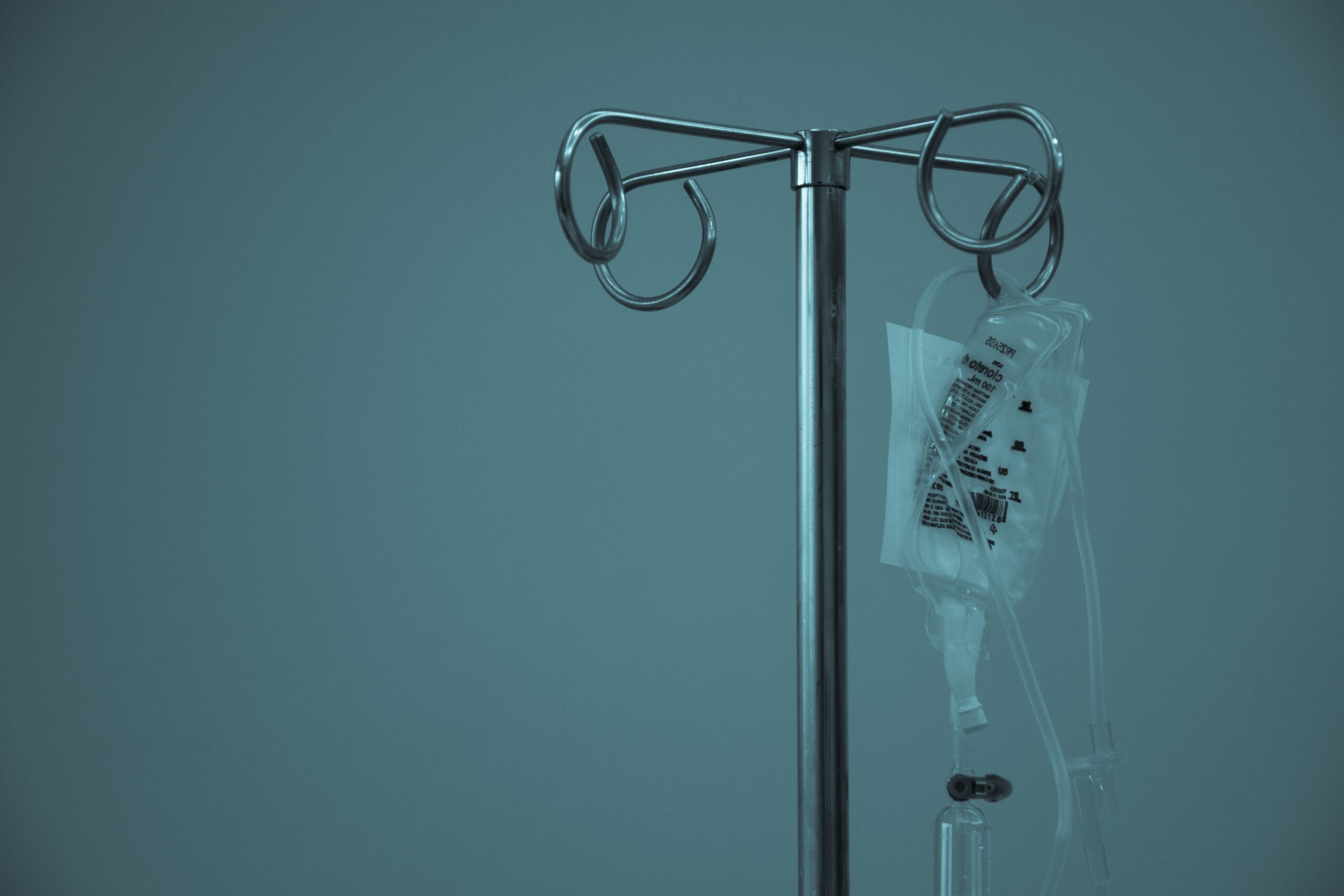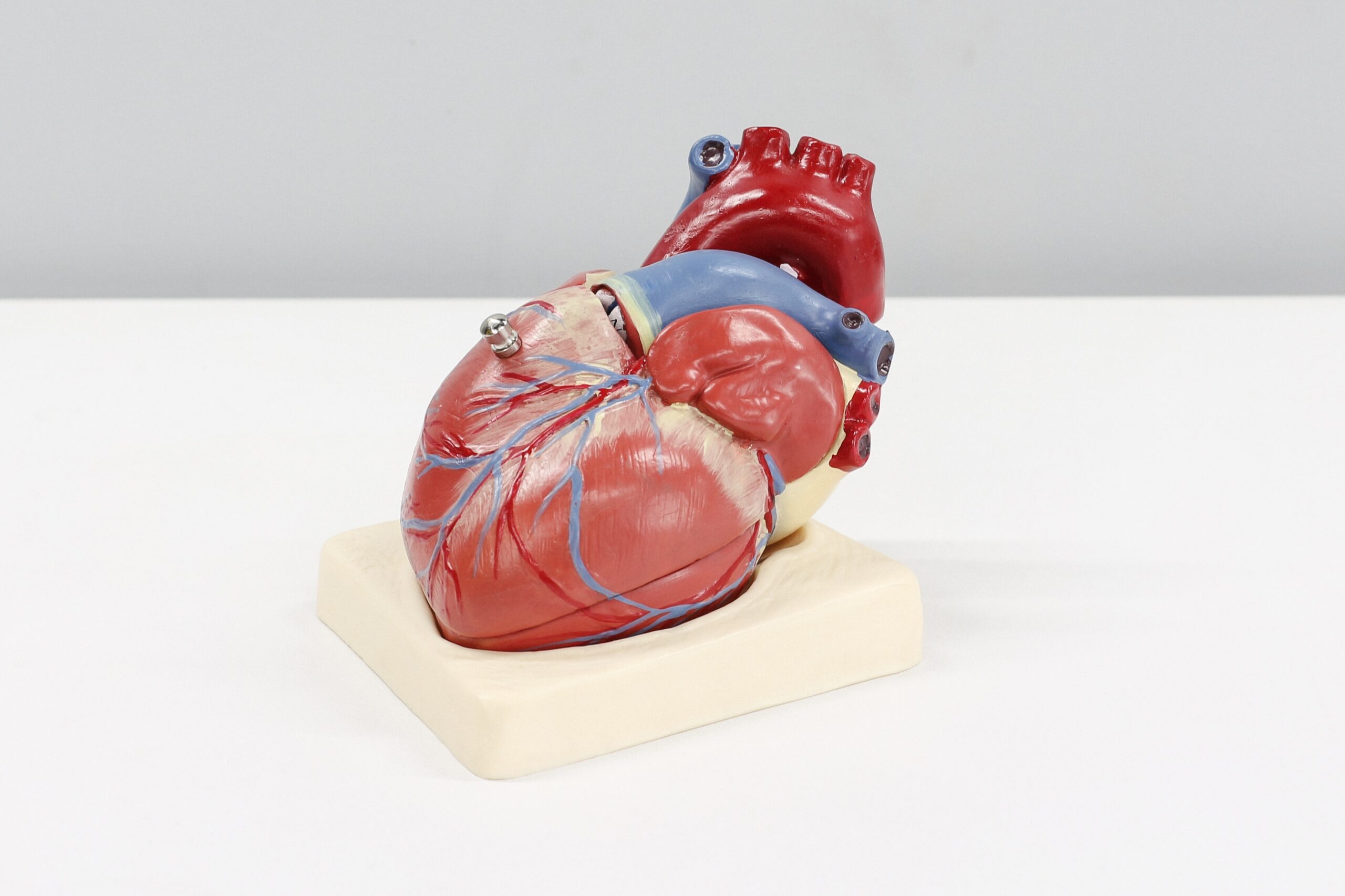If you're wondering about the treatment options for prostatitis, you've come to the right place. Dealing with this painful condition can be a real challenge, but fear not, because there are effective treatments available. From antibiotics to pain relievers, this article will explore the various approaches to managing prostatitis and help you gain a better understanding of the options that are out there. So, let's dive right in and discover what the treatment for prostatitis entails.
Understanding Prostatitis
Prostatitis refers to the inflammation of the prostate gland, which is a walnut-sized gland located just below the bladder in men. This condition can cause a variety of symptoms and may be classified into different types based on the underlying cause. It is important to understand the various aspects of prostatitis in order to seek appropriate treatment and manage the condition effectively.
Definition of Prostatitis
Prostatitis is defined as the inflammation of the prostate gland. This inflammation can be caused by infection, injury, or other factors. The condition can lead to a range of symptoms, including pain in the pelvic area, frequent urination, difficulty urinating, and sexual problems. It is essential to distinguish between different types of prostatitis to determine the most suitable treatment approach.
Types of Prostatitis
There are four main types of prostatitis:
-
Acute Bacterial Prostatitis: This type is caused by a bacterial infection and usually manifests with symptoms such as sudden onset of severe pain in the pelvic area, fever, chills, and difficulty urinating. It requires immediate medical attention.
-
Chronic Bacterial Prostatitis: This type is characterized by recurrent urinary tract infections caused by bacteria that persistently infect the prostate gland. Symptoms may be milder and more persistent than acute bacterial prostatitis.
-
Chronic Prostatitis/Chronic Pelvic Pain Syndrome (CP/CPPS): This is the most common type of prostatitis and is characterized by pelvic pain that can last for months or even years. It may not be associated with any detectable infection.
-
Asymptomatic Inflammatory Prostatitis: This type does not cause symptoms but is diagnosed incidentally during medical examinations for other reasons. Treatment is usually not required unless symptoms develop.
Causes of Prostatitis
The causes of prostatitis can vary depending on the type of prostatitis:
-
Acute Bacterial Prostatitis: This type is typically caused by bacterial infections that enter the prostate gland through the urinary tract or bloodstream. Common bacteria responsible for this infection include E. coli and Klebsiella.
-
Chronic Bacterial Prostatitis: In this case, recurrent urinary tract infections lead to a chronic infection in the prostate gland. The bacteria responsible for the infection may be difficult to eliminate completely.
-
Chronic Prostatitis/Chronic Pelvic Pain Syndrome: The exact cause of this type is still unknown. However, various factors such as previous urinary tract infections, pelvic trauma, stress, and immune system disorders may contribute to its development.
-
Asymptomatic Inflammatory Prostatitis: The cause of this type is unclear, but it is believed to be linked to inflammation and immune system abnormalities within the prostate gland.
Symptoms Associated with Prostatitis
Prostatitis can cause a wide range of symptoms depending on the type and severity of the condition. Common symptoms include:
- Pain or discomfort in the pelvic region, genitals, lower back, or abdomen
- Frequent urge to urinate, especially at night
- Burning or pain during urination
- Difficulty starting or stopping urination
- Weak urine flow
- Blood in the urine or semen
- Painful ejaculation
- Erectile dysfunction or loss of libido
- Flu-like symptoms such as fever, chills, and body aches
It is important to consult a healthcare professional if any of these symptoms occur, as they may be indicative of prostatitis or another underlying condition.
Diagnostics for Prostatitis
In order to diagnose prostatitis accurately, healthcare professionals may utilize a variety of diagnostic methods. These methods help determine the type and severity of the condition, allowing for appropriate treatment plans to be developed.
Physical Examination
During a physical examination, your healthcare provider may palpate the prostate gland to check for enlargement, tenderness, or any abnormalities. They may also assess the surrounding areas, such as the abdomen and lower back, for signs of inflammation or tenderness.
Lab Tests
Lab tests are commonly used to aid in the diagnosis of prostatitis. These tests may include:
- Urine analysis: This test helps identify any abnormal levels of white blood cells, red blood cells, bacteria, or other substances in the urine, which can indicate an infection or inflammation.
- Prostate fluid analysis: A sample of prostate fluid may be collected through a rectal exam and examined for signs of infection or inflammation.
- Semen analysis: This test analyzes the semen for any abnormalities, such as the presence of bacteria or white blood cells.
Imaging Tests
Imaging tests, such as ultrasound or magnetic resonance imaging (MRI), may be used to visualize the prostate gland and surrounding structures. These tests can help identify any structural abnormalities, such as an enlarged prostate or abscesses.
Biopsy
In some cases, a prostate biopsy may be necessary to rule out other conditions, such as prostate cancer. During a biopsy, a small tissue sample is taken from the prostate gland and examined under a microscope for any signs of cancer cells or other abnormalities.

Non-Medical Treatments for Prostatitis
In addition to medical treatments, there are non-medical approaches that can be used to manage and alleviate the symptoms of prostatitis. These methods focus on lifestyle changes and alternative therapies that may help improve overall prostate health.
Lifestyle Changes
Making certain lifestyle changes can have a positive impact on prostatitis symptoms. These changes may include:
- Drinking plenty of water: Staying hydrated helps flush out bacteria and other toxins from the urinary tract, reducing the risk of infection.
- Avoiding bladder irritants: Certain substances, such as caffeine, alcohol, spicy foods, and acidic foods, can irritate the bladder and worsen symptoms. It is advisable to limit or avoid these irritants.
- Managing stress: Stress can exacerbate symptoms and trigger flare-ups. Engaging in stress-reducing activities, such as exercise, meditation, or therapy, can help alleviate symptoms and improve overall well-being.
- Regular exercise: Exercise has been shown to have positive effects on prostate health. Engaging in regular physical activity can improve blood flow to the prostate gland and reduce inflammation.
- Good hygiene: Practicing good hygiene, including regular bathing, keeping the genital area clean, and wearing loose-fitting, breathable underwear, can help prevent the spread of bacteria and minimize the risk of infection.
Prostate Massages
Prostate massages, performed by a healthcare professional or using specialized tools, can help alleviate symptoms of prostatitis. These massages aim to gently stimulate the prostate gland and promote blood flow, thereby reducing inflammation and relieving pain. However, it is important to consult a healthcare professional before attempting prostate massages to ensure proper technique and safety.
Biofeedback
Biofeedback therapy involves using electronic devices to monitor and control certain bodily functions, such as muscle tension. It can be used to treat prostatitis by training individuals to control the muscles in the pelvic floor and increase awareness of their body's responses. This therapy can help reduce pain and improve bladder control.
Medical Treatments for Acute Bacterial Prostatitis
Acute bacterial prostatitis requires immediate medical intervention to prevent complications and relieve symptoms. The main goal of treatment is to eliminate the underlying infection and alleviate associated pain.
Antibiotics Treatment
To effectively treat acute bacterial prostatitis, antibiotics are typically prescribed. The choice of antibiotics depends on the suspected bacteria causing the infection, as determined by urine or prostate fluid analysis. These medications are usually taken for a period of several weeks to ensure complete eradication of the infection.
Hospitalization for Severe Cases
In severe cases of acute bacterial prostatitis, hospitalization may be necessary. This allows for closer monitoring and intravenous administration of antibiotics to ensure rapid and effective treatment. Hospitalization is typically recommended if the infection causes high fever, inability to urinate, or signs of a spreading infection.
Pain Relievers
Pain relievers, such as nonsteroidal anti-inflammatory drugs (NSAIDs) or acetaminophen, may be prescribed to alleviate the pain associated with acute bacterial prostatitis. These medications help reduce inflammation and provide temporary relief from discomfort.
Muscle Relaxants
In some cases, muscle relaxants such as alpha-blockers may be prescribed to help relax the muscles in the prostate gland and bladder neck. These medications can help improve urine flow and alleviate symptoms of urinary retention.

Medical Treatments for Chronic Bacterial Prostatitis
Chronic bacterial prostatitis requires long-term treatment to manage recurrent infections and minimize symptoms.
Long-Term Antibiotics Treatment
To manage chronic bacterial prostatitis, long-term antibiotics treatment is often necessary. This involves taking antibiotics for an extended period, even if symptoms appear to subside. The duration of treatment may range from several weeks to several months, depending on the severity and frequency of infections.
Prostate Injections
In some cases, direct injections of antibiotics into the prostate gland may be recommended. This approach allows for higher concentrations of antibiotics to reach the infected tissues, improving the efficacy of the treatment. Prostate injections are typically performed in a healthcare setting and may require multiple sessions.
Surgical Method
In rare cases, surgery may be considered to alleviate symptoms and prevent recurrent infections. Surgical options for chronic bacterial prostatitis may include transurethral resection of the prostate (TURP) or laser surgery to remove obstructive tissue or abscesses within the prostate gland.
Alternative Therapies
Some alternative therapies, such as acupuncture or herbal remedies, may be explored alongside medical treatments for chronic bacterial prostatitis. However, their effectiveness may vary, and it is important to consult a healthcare professional before incorporating these therapies into the treatment plan.
Medical Treatments for Chronic Prostatitis/Chronic Pelvic Pain Syndrome
Chronic prostatitis/chronic pelvic pain syndrome (CP/CPPS) can be challenging to treat due to the lack of a specific underlying cause. Treatment focuses on managing symptoms and improving quality of life.
Alpha Blockers
Alpha blockers are medications commonly used to relax smooth muscles in the prostate gland and bladder neck. These medications may help alleviate symptoms such as urinary urgency, frequency, and pain during urination in individuals with CP/CPPS.
Anti-Inflammatories
Nonsteroidal anti-inflammatory drugs (NSAIDs) may be prescribed to reduce inflammation and relieve pain associated with chronic prostatitis. These medications can help alleviate symptoms and improve overall comfort.
Pelvic Floor Physical Therapy
Pelvic floor physical therapy involves exercises and techniques aimed at strengthening and relaxing the muscles in the pelvic area. This therapy can help alleviate pain, improve muscle tone, and enhance bladder control. Examples of pelvic floor physical therapy techniques include pelvic muscle exercises (Kegel exercises), massage, and stretching.
Psychotherapy
Since CP/CPPS is often associated with emotional distress and disruption of daily activities, psychotherapy may be recommended to address psychological factors and improve overall well-being. Therapeutic approaches such as cognitive-behavioral therapy (CBT) can help individuals develop coping mechanisms, manage stress, and reduce the impact of prostatitis on mental health.

Medical Treatments for Asymptomatic Inflammatory Prostatitis
Asymptomatic inflammatory prostatitis typically does not require active treatment due to the absence of symptoms. However, regular check-ups may be recommended to monitor any changes in the condition.
Observation
In the absence of symptoms, the healthcare provider may choose to observe the condition without active intervention. Regular check-ups and monitoring of prostate-specific antigen (PSA) levels may be recommended to ensure there are no complications or progression of the condition.
Regular Check-ups
Regular check-ups are essential to monitor the condition and closely observe any developments. These check-ups may involve physical examinations, urine tests, and imaging tests to assess the prostate gland's health and detect any changes that may require intervention.
Potential Risks and Side Effects of Prostatitis Treatments
While treatment options for prostatitis aim to alleviate symptoms and improve overall well-being, there can be potential risks and side effects associated with certain treatments.
Antibiotics Side Effects
The long-term use of antibiotics can lead to side effects such as gastrointestinal upset, allergic reactions, and the development of antibiotic resistance. It is essential to follow the prescribed dosage and duration of antibiotics as directed by the healthcare provider.
Risk Associated with Surgery
Surgical interventions for prostatitis, such as TURP or laser surgery, carry some risks and potential complications. These may include bleeding, infection, urinary incontinence, erectile dysfunction, and retrograde ejaculation. It is important to discuss the potential risks and benefits of surgery with a healthcare professional before making a decision.
Psychological Impact
Living with prostatitis can have a significant psychological impact on individuals, leading to feelings of frustration, anxiety, and depression. It is crucial to seek support from healthcare professionals, support groups, or mental health counselors to address these psychological aspects and improve overall well-being.
Impact of Prostatitis on Lifestyle and Quality of Life
Prostatitis can have a profound impact on an individual's lifestyle and overall quality of life. It is important to recognize and address these effects to effectively manage the condition.
Impact on Sexual Function
Prostatitis can affect sexual function and lead to symptoms such as erectile dysfunction, painful ejaculation, and loss of libido. These symptoms can significantly impact an individual's sexual relationships and overall sexual satisfaction. Seeking appropriate treatment and support from healthcare professionals can help alleviate these sexual problems and improve intimacy.
Emotional Effects
Living with chronic pain and discomfort can take a toll on an individual's emotional well-being. Prostatitis can result in emotional distress, frustration, anxiety, and even depression. It is crucial to address these emotional effects through therapy, support groups, and self-care techniques to maintain a positive outlook and overall mental health.
Impact on Daily Activities
Prostatitis symptoms, such as pain and urinary urgency, can disrupt daily activities and reduce overall productivity. It is important to manage symptoms effectively through medical treatments, lifestyle changes, and support from healthcare professionals to minimize the impact on daily life.
Prevention of Prostatitis
Taking preventive measures can help reduce the risk of developing prostatitis or minimize its recurrence. These preventive strategies focus on maintaining a healthy lifestyle and promoting overall prostate health.
Regular Prostate Check-ups
Regular check-ups with a healthcare professional are important for early detection and treatment of any prostate-related issues. These check-ups may involve physical examinations, screening for prostate-specific antigen (PSA) levels, and discussion of any symptoms or concerns.
Healthy Diet and Lifestyle
Eating a nutritious and balanced diet, rich in fruits, vegetables, whole grains, and lean proteins, can support overall prostate health. It is important to limit the intake of processed foods, sugar, and unhealthy fats. Regular exercise, such as brisk walking or cycling, can also contribute to a healthy lifestyle and reduce the risk of prostatitis.
Hydration
Staying well-hydrated is essential for maintaining prostate health and preventing urinary tract infections. Drinking an adequate amount of water throughout the day helps flush out bacteria and toxins from the urinary tract.
Sexual Behaviour
Adopting safe sexual practices, such as using condoms and practicing good hygiene, can help reduce the risk of sexually transmitted infections that can lead to prostatitis. It is also important to maintain a healthy and mutually satisfying sexual relationship, as a lack of sexual activity may increase the risk of prostate inflammation.
In conclusion, understanding prostatitis and its treatment options is crucial for managing this common condition effectively. Whether it is acute bacterial prostatitis, chronic bacterial prostatitis, chronic prostatitis/chronic pelvic pain syndrome, or asymptomatic inflammatory prostatitis, medical treatments, non-medical approaches, and lifestyle changes can all play a significant role in alleviating symptoms and improving quality of life. Regular check-ups and adopting preventive measures can also help reduce the risk of developing prostatitis or minimize its recurrence. By working closely with healthcare professionals and incorporating appropriate treatments, individuals can effectively manage prostatitis and regain control of their health and well-being.

